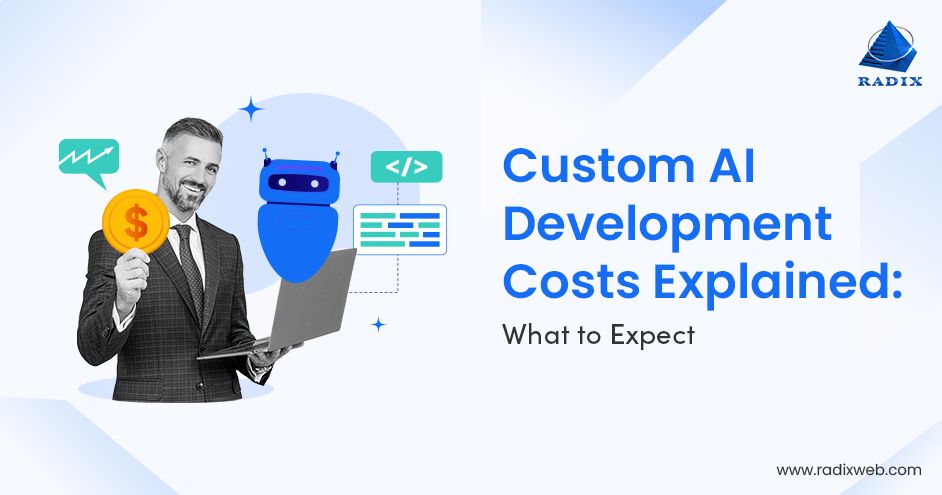
Skip Setup Headaches and Start Your Project Fast - Download Free Boilerplates
Agile Enterprise Architecture Framework: An Enabler of Enterprise Agility


EA or enterprise architecture is gaining popularity, given its positioning and the merits it offers. Real-world IT expectations are inherently lofty, yet an aligned and agile EA framework can prove invaluable to business success.
Here's how-
The traditional approach to enterprise architecture is meant to define the required and current state of the existing architecture. However, this approach cannot keep in step with the evolving state of architecture within an enterprise. (Thank you, Mr. Market disrupter). Traditionally an enterprise architect builds on existing architecture and tries to include as many improvements as he can.
This consistent cycle of improvement/enhancements, much like the interaction between Agile and DevOps, is necessary given that a company's EA is subject to change in the blink of an eye. An enterprise architect is usually wading neck-deep in the waters of strategic planning, business modelling, or creating a solution-oriented response. In addition to the above, the enterprise architect also builds ESA (Enterprise Solution Architecture), which is a mixture of EA and SA (solution architecture). This provides a pragmatic and holistic model to facilitate the smooth functioning of enterprise data flow systems and is an incrementally iterative approach towards the Promised Land, Agility.
On This Page
What is Agile Enterprise Architecture?

For a team to be termed agile or one that works in an AEAF (Agile Enterprise Architecture Framework) environment, the architects, must remain involved throughout the development process. With an AEAF system, architects double up as visionaries that manage change and address complex issues. They work together to define and then review functional specs and rope in the business team to match client expectations and predefined business requirements while staying on time and on budget.
Critical Areas Covered by Agile ESA/ AEAF
Agile Enterprise Solution Architecture cover five major areas, namely-
- Enterprise Capability- A summary of the enterprise's organizational assets that facilitate strategic planning, relevance, and context.
- Case Scenarios and Requirements- The functionality and business process alignment required for the proposed IT system.
- Architecture Overview- Business metrics, architectural patterns, principles, and risk assessments.
- IT Functional Service- Relationships, interactions and communication, and solidarity.
- IT Infrastructure- An overview of the enterprise's tech assets from an operational perspective.
Looking to build a robust AEAF system for your project?
Let’s Get Started
Agile Enterprise Architecture Framework

Encompassed by AEAF architecture, high-value statements like initiative details, processes, and workflows need to be aligned with AEAF components and checked for compatibility before implementation as part of the enterprise's architecture. The enterprise's IT team facilitates inclusion between the enterprise's blueprint and its solution architecture. An Agile enterprise architecture framework focuses on all levels of service engagements, offers, agile metrics and systems for optimal efficiency during crunch time.
Advantages of AEAF
IT assets can be categorized as interaction services, app logic, data, and tech services at the functional level. An AEAF system can help clarify C-Level issues and offer stakeholders a clear picture of what is going on under the hood for issue addressal and ultimate resolution.
Do you know that as per the latest agile statistics, companies have claimed to enjoy 41% predictability improvement of software product deployment by embracing the agile approach?
AEAF forms critical architectural thinking cubes that bridge the gap between strategy, capability, and technology.
Some of the advantages that AEAF offers are-
- Input mapping from stakeholders inclusive of objectives and requirements
- The introduction of key architectural metrics to facilitate decisions
- Service abstraction interfacing and subsequent realization
- The analysis of architectural modeling governance and assurance
- Proposes a 'just-enough' approach to architecture for optimal value streams
- Incorporates a modeling framework to balance enterprise capabilities with its architecture

"Enterprise Architecture is not a method, principle, or doctrine. It is a way of thinking, enabled by patterns, frameworks, standards, etc., essentially seeking to align both the technology ecosystem and landscape with the business trajectory driven by both the internal and external forces." Daljit R Banger
AEAF Deployment in an Enterprise
As an architectural modeling framework, Agile ESA targets certain mission-critical objectives to manage an agile software development project, which are enumerated below-
- Simplification- The elimination of redundant complexity and the simplification of architectures for easy cognition and adoption.
- Holistic- Agile ESA propagates a panoramic approach to trace elements that enhance applicability and pragmatism.
- IT Service-Oriented - Focuses on balancing the EAs, definitions, and the SA's details to achieve successful IT service delivery.
- Adaptability- Agile ESA can be applied to a bevy of architectural styles with the option to customize and extend existing frameworks to match enterprise growth.
Dimensions of Agility in Enterprise Architecture Frameworks

When it comes to enterprise-level transformation, Agility plays a crucial role while offering a strategic advantage in terms of functional operation and business evolution. EA and Agile complement each other perfectly and offer a range of integrated DevOps solutions. Here are a few places where Agile and EA symbiotically offer real-world business value-
- Agile EA Planning
The first step of setting up an AEAF covers the initial vision requirements and subsequent planning. It defines the scope of the problem statement, stakeholder concerns, and resolutions offered.
The architecture vision incorporates detailed documentation and access requests to develop the target architecture while stating stakeholder priority. Its backlog incorporates complexity values and the urgency of the product to be developed.
- Architecture Definition
In this step, the domain architecture covers all aspects such as business, application, technology prowess, and data depth. Stakeholders approve a set of domain architectures that bridge gaps and meet their preferences. Architecture definition is the conduction of iteration/version plans, stand-ups, self-organization, and the generation of Burn Ups/Burn Down charts.
- Agile EA Taxonomy
Artifacts like agile principles, values, guidelines, best practices, and checklists are detailed in this step. With this step, each sprint is provided with a robust framework to build upon, while keeping in line with technology, business, and stakeholder requirements.
The 'Working product' created in this step conveys expected outcomes (albeit without development process details). This step reduces the work by breaking up a project into easily accessible interim goals for the team to achieve. This translates into rapid success and an overall elevation of team morale.
On the technical side, it defines packages (predecessor and successor) while making an effort put in by the development team traceable to objectives boosting stakeholder/product owner confidence.
- Implementation
In contrast with the ‘Big-Bang' approach in which decisions detailing the requirements of the development process are meted out one by one, AEAF structures encourage teams to go for an agile and incremental approach while ensuring that the design being developed is scalable and in alignment with the client's vision statements.
Enhancing efficiency, AEAF implementation helps the architecture team to see the bigger picture as the development team simultaneously works on their sprint deliverables or minimum viable product.
Decisions are made together and thus ensure a perfect balance between the business value standpoint, reduction of technical debt, and customized design (UI/UX) elements included. An Agile enterprise architect must focus on-
o Intentional architecture in collaborationo Simplicity and minimalism in all aspects of developmento Code it/Model ito Build it/Test ito Implement flow
- Agile EA Organization
A team functioning with an AEAF structure comprises of Enterprise as well as Solution Architects. The Business Architecture team includes business architects along with the roles mentioned above. EA teams working in tandem with Agile teams ensure successful execution of tasks while taking positive steps towards the project's outcome and aligning with the client's vision. (Feedback and iterations are, of course, part of the game)
Want to experience growth with robust enterprise software architecture?
Schedule a Call
- Agile EA Governance Model
Agile Governance concerns itself with creating tangible value across the organization and isn't confined to a specific project at hand. Agile Governance creates a bridge between the organization's development teams and managing agile projects for optimal efficiency and successful delivery. An ideal Agile EA Governance Model offers the following advantages-
- It acts as a support system for agile teams to take architecture-related decisions independently.
- It accesses the capabilities of cross-functional agile teams to deal with complex issues.
- It results in massive reductions in administrative overheads.
Summary
When you deploy an AEAF system to your development initiative, you immediately benefit from regular and easy to execute changes and iterations that match functional specifications without deviating from the initial design.
The sprint scope is decided by the product owner, the agile architect, and the development team, thus fostering a sense of meaning among team members across hierarchies.
So, there you have it- how Agile and SA combines to build a framework that empowers your development initiative with a combination of the right team, the right technology, the right process, and the right approach resulting in 100% client success. Choose top-notch custom software development services from Radixweb can prove to be game-changing. We take pride in the Agility we extend to all spheres of our business while offering top-notch AEA framework builds tailored to your enterprise requirements.
Ready to brush up on something new? We've got more to read right this way.





